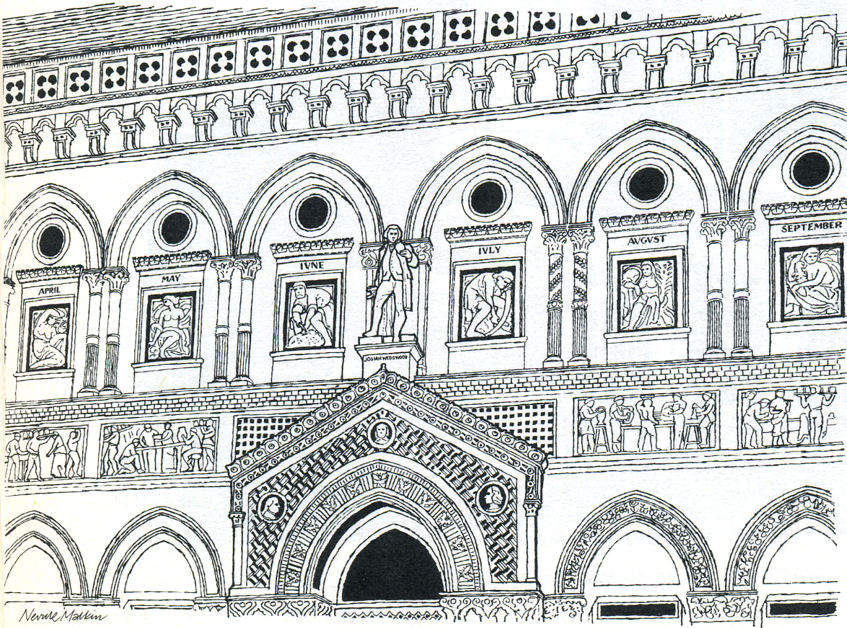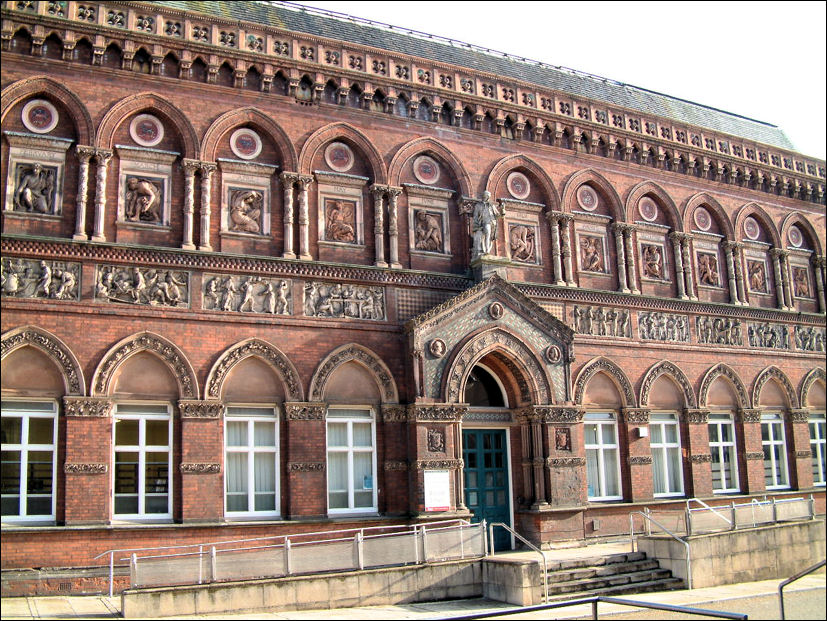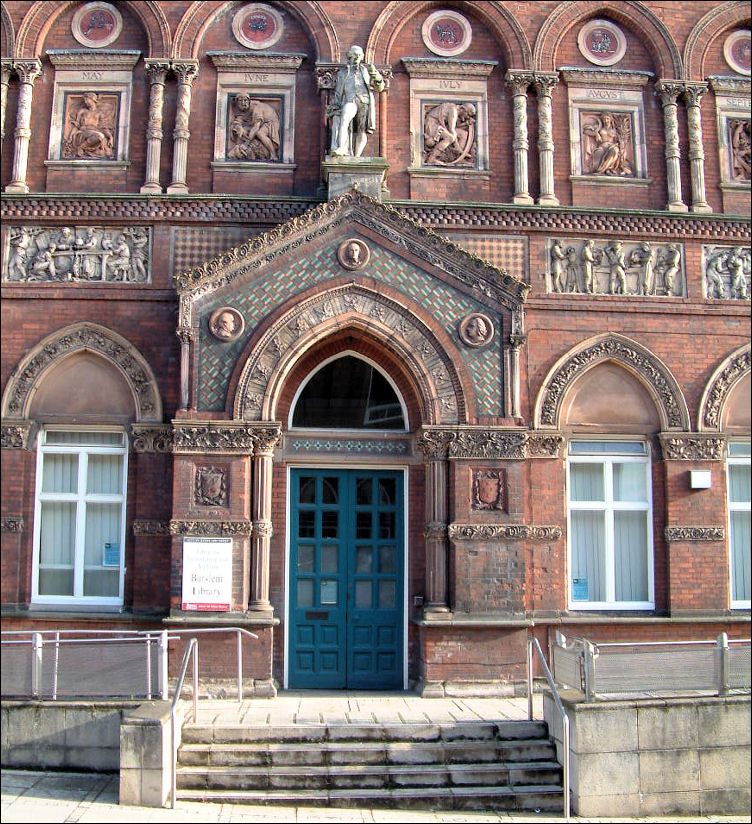|
|
|
![]() back to "The Grand Tour" index
back to "The Grand Tour" index
Neville Malkin's "Grand Tour" of the Potteries
buildings of
Burslem
![]()
![]()
![]()
next: Burslem School of
Art
previous: The
Leopard, Burslem
contents: index of buildings of Burslem
|
No 47 - The Wedgwood Institute, Burslem
|

Burslem - The Wedgwood
Institute
pen drawing by Neville Malkin -
July 1974

The façade of the Wedgwood
Memorial Institute, Queen Street , Burslem

|
"This
is not part of a sumptuous palace in some sunny Venetian square but
the facade of the Wedgwood Institute, Burslem. The central character
of this architectural spectacular is Josiah Wedgwood, who, from his
vantage point over the tiled entrance, surveys the rush of traffic and
pedestrians. His background consists of a colourful wall, richly
decorated with carvings depicting the various stages of pottery
manufacture; figures that represent the months; inlaid signs of the
zodiac; arches, pillars, foliage, and many interesting examples of
mosaic and brick work. The design and plans were by Mr. G. B. Nichols
who was obviously influenced by the work of 15th century Italian
architects; the terracotta details were by Rowland Morris and William
Wright, national scholars from the Potteries School of Art. A decision to acquire a site for an institute as a memorial to Josiah Wedgwood was made in 1859, and in 1863 land was bought in Queen Street for £1,500. Mr. W. E. Gladstone, M.P., Chancellor of the Exchequer, laid the foundation stone in October of that year. Beneath the stone, a china casket was placed, containing a record on vellum of the building to be erected. In 1869, the building was completed and officially opened by Earl de Grey. Burslem was the second town in the country to take advantage of the Free Libraries Act which insured an annual income of £200 for the Institute. The first school of art in the Institute was founded in October, 1869, and the appointed headmaster, Mr. G. Theaker of the South Kensington Art School, held the position until his death in 1902. In 1894, the new Technological Schools were incorporated and opened by Princess Louise. By 1898 there were 400 students attending the various technical and art classes. One student was Oliver Lodge, the great scientist."
|
![]() more on the
Wedgwood Institute
more on the
Wedgwood Institute
![]()
![]()
![]()
next: Burslem School of
Art
previous: The
Leopard, Burslem
contents: index of buildings of Burslem
back to "The Grand Tour" index